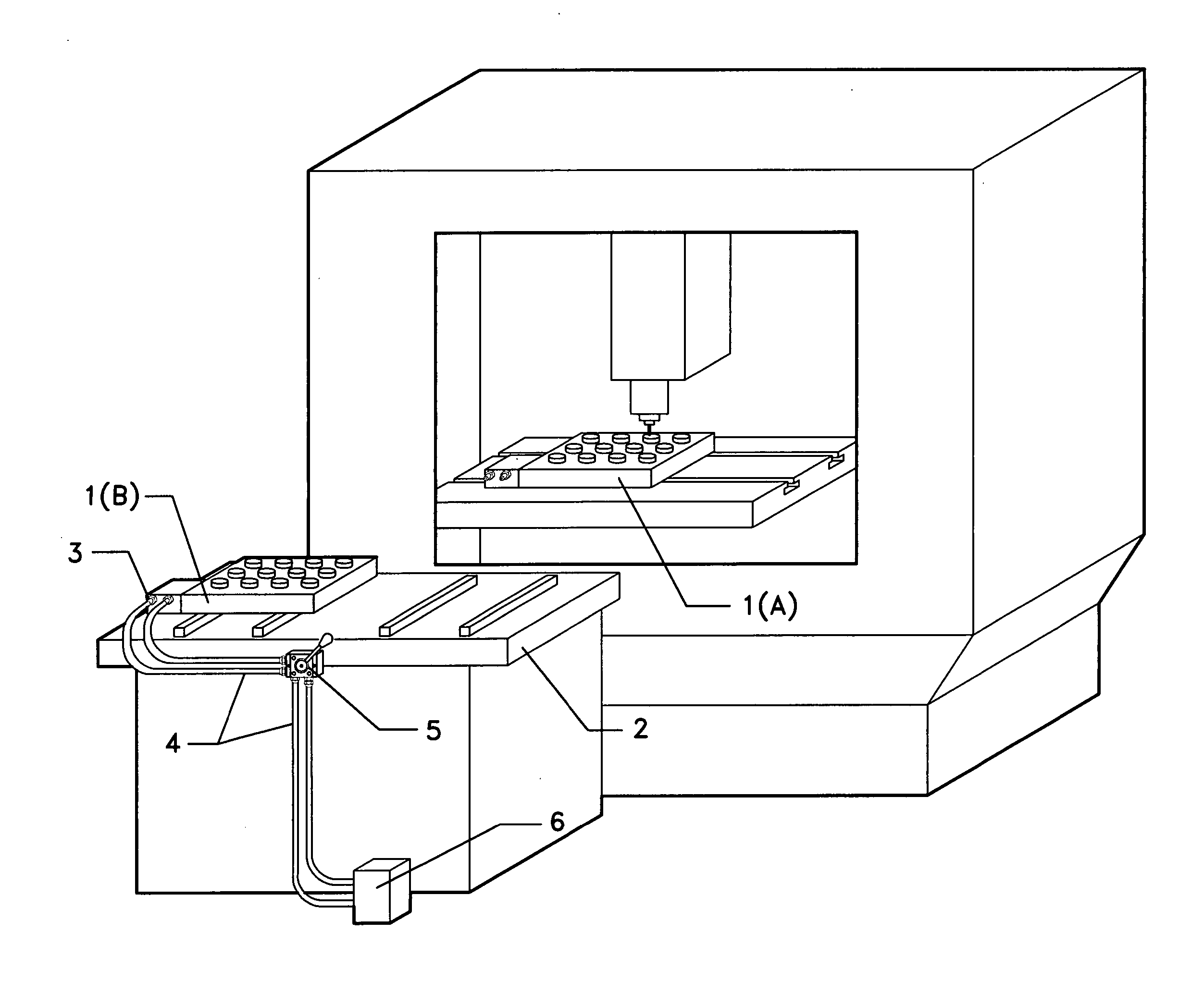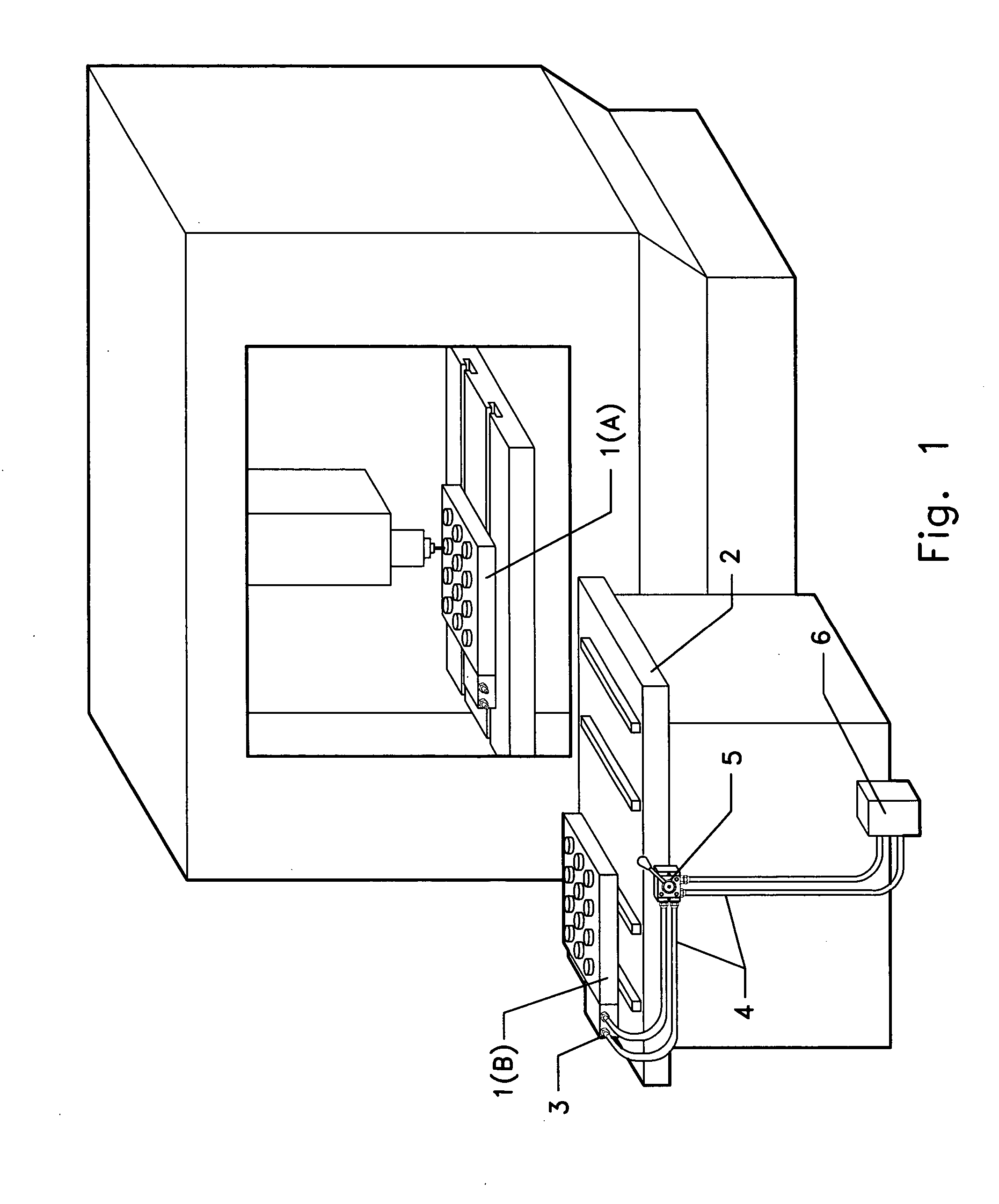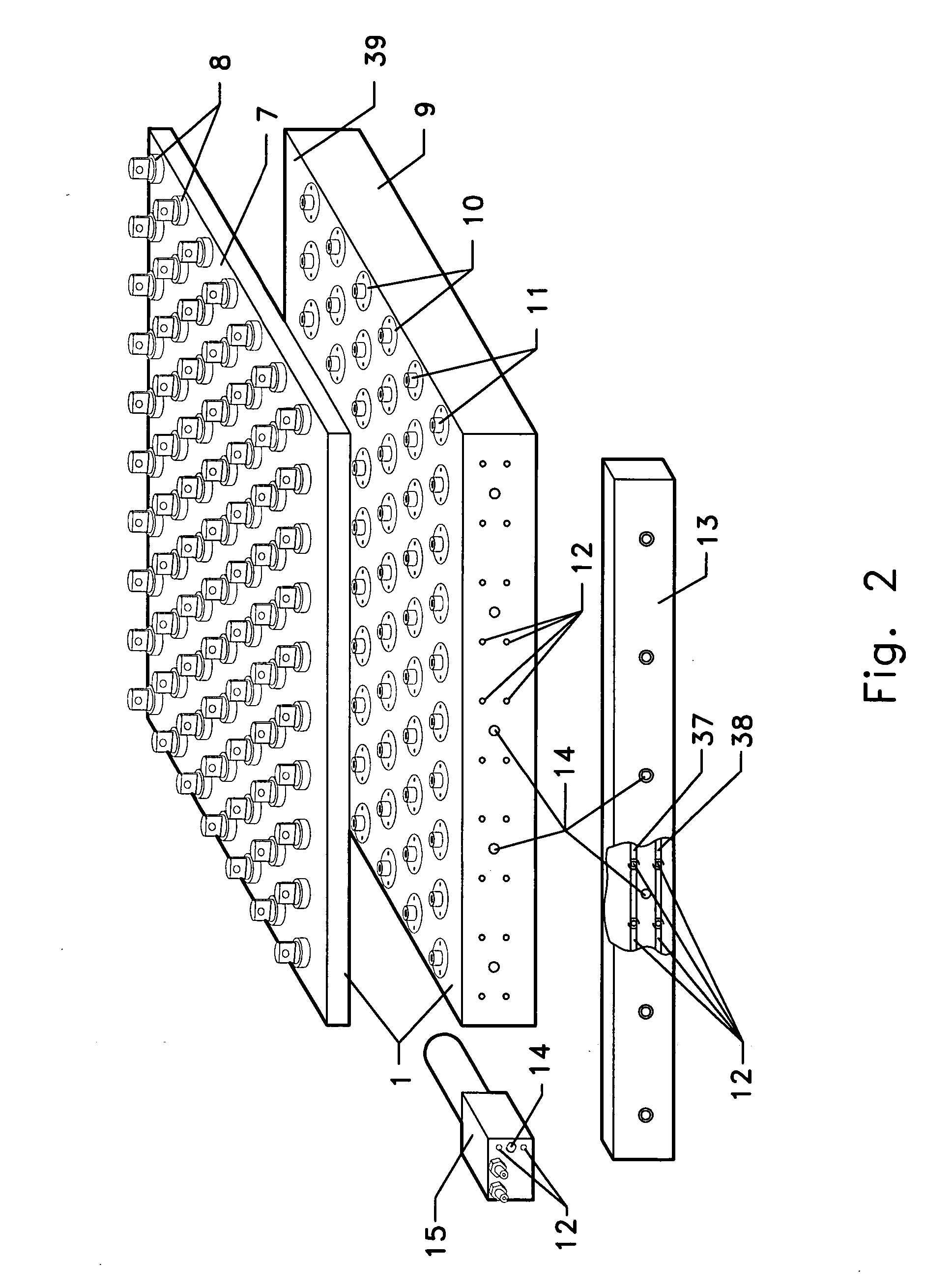While these devices have been developed to hold parts securely and accurately, loading only one part at a time often severely limits
machine and operator efficiency.
Perhaps one of the significant problems that faced in this field is the fact that CNC
machining is a relatively new field and though some work has been done in the field of fourth axis work holding, relatively little has been done in work holding in horizontal or vertical machining centers.
While this approach may provide some improvement, the loading and unloading of parts is usually done with the
machine turned off and therefore limits efficiency for both the machine and for the operator.
This method may improve efficiency to some degree but problems of efficiency remain.
On some jobs, the loading and unloading of the parts may take longer than the machine
cycle time.
The machine would then be waiting for the operator and therefore not operating as efficiently as possible.
These holding devices can also tend to be oversized and bulky limiting the number of them that fit into the work area and thereby limiting the number of parts that can be loaded at a particular time.
In addition to these efficiency problems, this
pallet approach can create other problems.
When vices are used, accuracy may be hard to maintain due to inherent problems with vices.
The security of the part may be an issue if the size of the part varies and you are holding more than one part; one or more parts may be loose when the others are tight.
When custom jaws are used the cost may be high and accuracy can still be an issue with duplication for multiple holding devices and multiple pallets.
One type of problem with this device, which is solved by the current invention, is the very limited scope of its application; it is very limited in the size and shape of the parts that it can hold, the angles at which it can hold them, and the number of parts it can hold at a time.
If it is too long, the device may not work at all or quality may be negatively impacted.
It is not fully adaptable for other applications such as clamping by pushing, pulling for sideways movement, clamping in "V" blocks, or many other methods of holding.
This device is also very limited when holding parts in the horizontal plane and doing cross work because of the distance from the top of the fixture to the centerline of the
collet.
This distance can require excessively long tooling or extension of the part a significant distance from the
collet, either of which may
impact rigidity and accuracy.
This can significantly limit the number of parts that can be machined per cycle.
The device can also be limited to holding parts vertically or horizontally and may not be efficiently machined in other planes.
This approach does solve some of the problems but it may also create problems.
One problem is the time required to create custom holding devices.
The excessive time required often does not meet the demands of a quick response marketplace.
The manufacturer is therefore often faced with the choice of inefficient and expensive setup or inefficient and expensive run time.
Another problem is that run efficiency can be rather limited.
Custom fixtures are usually bulky limiting the number of parts that will fit in the work area and therefore the number that can be loaded at a time.
Self-made fixtures also tend to be inaccurate affecting quality and also creating inefficiencies.
Efficiencies are also lost due to operator fatigue.
In addition, often the parts are not held securely creating quality,
rework and safety issues.
Screws, which are often used in holding parts, can tend to mar the part or collapse a
thin walled part affecting quality and therefore affecting efficiencies.
Unless two identical fixtures are made, the parts can need to be loaded and unloaded in the work area so the
load time can be slow and labor intensive and therefore machine down time can be lengthy.
Sometimes the design doesn't work as planned.
The
initial cost of custom fixture making can be high because it can require significant amounts of time from
highly skilled design personnel.
It can also require expensive materials and services since the materials are usually purchased in small quantities and the special services are preformed in small quantities (
heat treating,
anodizing,
grinding, etc.).
The on-going costs can also be high.
Fixtures may tend to become similar but are often not interchangeable; they are not easily adaptable to other parts.
They often become obsolete because of minor print changes or need major
rework.
The cost of starting over is, of course, very high.
The inventory of fixtures can become extensive, taking up large amounts of shelf space.
They can be expensive to maintain especially if they are lost and damaged.
 Login to View More
Login to View More  Login to View More
Login to View More 


